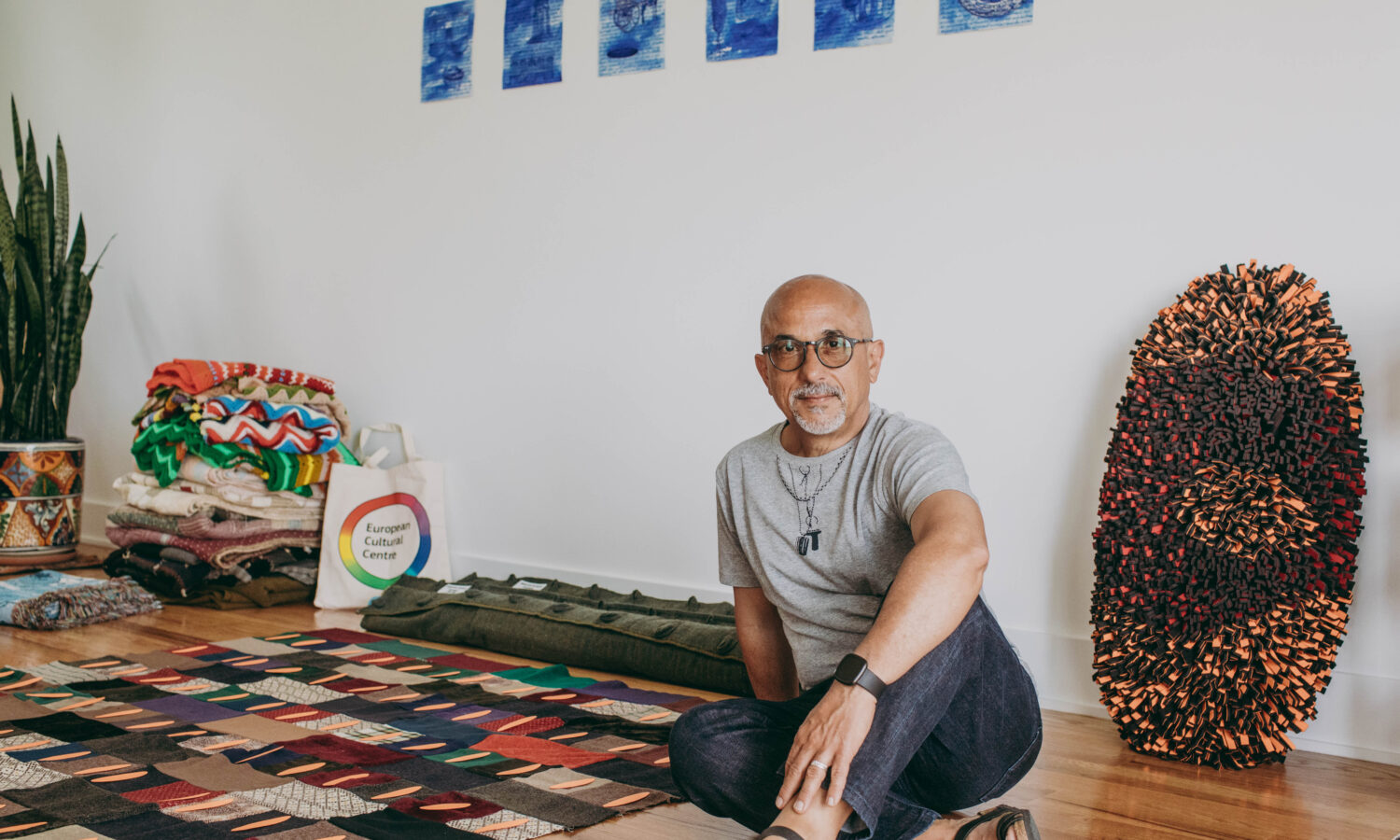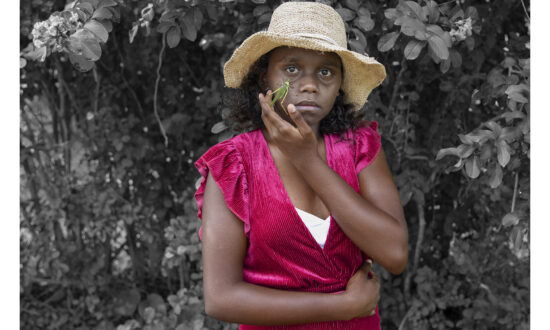Sebastian Di Mauro’s latest artworks are made with secondhand vintage quilts – and they draw us close to his hopes for humanity.
His exhibition, Sebastian Di Mauro: Collective Labour, at Onespace Gallery, West End, is a result of him “working together, in a sense” with the original creators of the quilts to “build a new narrative of unity and progress”.
Quilts are also known as comforters – and comfort is what they offer.
The vintage quilts Di Mauro has chosen as the foundation for this body of work also conjure the struggles and aspirations of the early settlers in the US. Arriving to an unfamiliar place, they made quilts from scraps of material, using what they could find to create the comfort they needed.
Di Mauro, who for decades has been well known in Brisbane as an artist, educator and sculptor, moved to the coastal state of Delaware in the US in 2021 after marrying American Dennis Chandler.
Di Mauro’s sewn alterations recast old quilts as artworks. He uses vintage materials to make meaning of the new social, cultural and political realities he experienced in the US. Building on the quilts’ histories, he is collaborating with the creators of these quilts.
In doing so, Di Mauro acknowledges aspirations that underpinned the establishment of the United States of America, as enshrined in the Bill of Rights ratified in 1791.
Rapidly shifting political beliefs, restriction of resources available to marginalised groups and divisions worldwide have seen human rights, once regarded as fundamental, critiqued by the right and the left. Di Mauro’s exhibition reflects his disquiet about these trends, at odds with the early commitment to openness in the establishment of the US.
Frayed (2023) overwrites the existing chequerboard of coloured squares with the word “RIGHT” embroidered with red thread, that weeps tails and ends to hang below the fabric. Above this is embroidered “the second”, which refers to the Second Amendment, the right to bear arms. Other words include “loss”, “boys own adventure” and a number, “48,830”. The latter is the staggering number of lives lost to firearms in the US in 2021. The trailing red and fraying threads evoke the many tragedies that ensue from such loss of life.
A motif repeated across the surface of Frayed (and the other five quilts in Collective Labour) is an elongated oval, which was first used by Di Mauro in a 1996 installation titled SKIN. On that earlier occasion its womb-like shape elevated the female. In this context, appliqued over each of the quilts, it is a plea for access to power for all marginalised groups.
Other quilts in this series describe the increasing disregard for LGBTQIA rights, evoked in Mariposa (2023), which overwrites a white quilt with a rainbow of colours and is titled for the slang used by Mexicans to refer to those outside the heterosexual spectrum.
Some American states, particularly in the south, have banned particular books from libraries, with abortion access also increasingly restricted. Words embroidered on this quilt include “scapegoats”, “humanity” and “diversity” that elevate fears around the restriction of freedoms previously taken for granted.

Get InReview in your inbox – free each Saturday. Local arts and culture – covered.
Thanks for signing up to the InReview newsletter.
This new show is bookended with an evocative series of watercolours in blue called Memoir in Ultramarine, along with his Throw series (Jacquard woven blankets of images on watercolour paper printed onto fabrics), both from 2021.
Di Mauro’s hope, and the impetus behind the histories woven into textiles, is his desire for new attention to humanity, equality and the sharing of available resources.
“Through art, we can weave a new narrative of unity and progress, transcending borders and divisions,” he insists.
In their tactility, colour and warmth, the works in Collective Labour engage us deeply in a moving paean to hope and humanity.
Sebastian Di Mauro: Collective Labour, until February 24, Onespace Gallery, West End
onespace.com.au
Support local arts journalism
Your support will help us continue the important work of InReview in publishing free professional journalism that celebrates, interrogates and amplifies arts and culture in South Australia.
Donate Here




